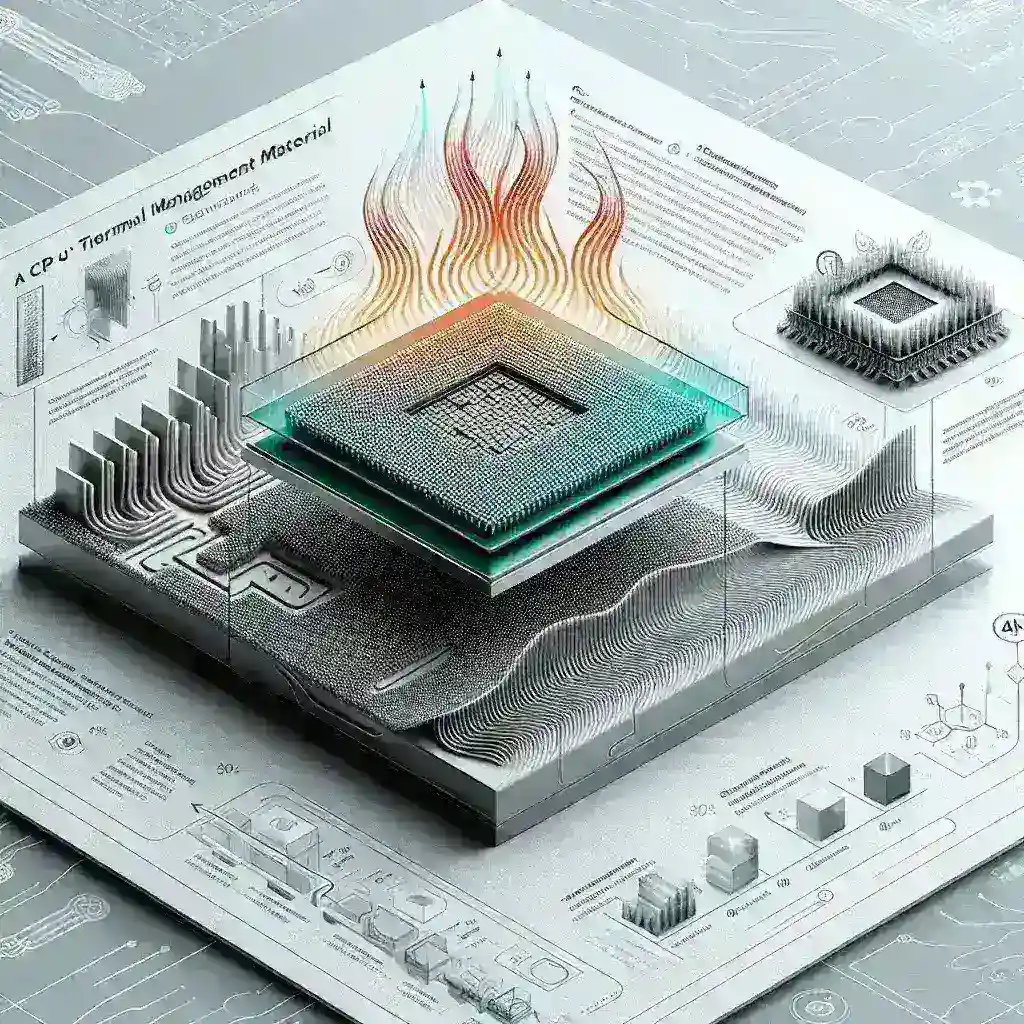Introduction to Thermal Management in CPUs
In the realm of computing, thermal management is crucial for optimal performance and the longevity of components. Traditional cooling methods often struggle to dissipate heat effectively, leading to thermal throttling and reduced performance. However, a recent breakthrough in thermal management materials promises to change the game, increasing CPU cooling efficiency by an impressive 40%. This article delves into the science behind this innovation, its implications, and what it means for the future of computing.
The Need for Advanced Thermal Management
As CPUs become more powerful, their heat output increases significantly. The demand for high-performance computing in gaming, data centers, and artificial intelligence drives the need for effective cooling solutions. Without proper thermal management, CPUs can overheat, leading to instability and damage. The traditional methods, such as air cooling and thermal paste, have their limitations in terms of efficiency and effectiveness.
Understanding Thermal Conductivity
At the core of thermal management is the concept of thermal conductivity, which refers to a material’s ability to conduct heat. Materials with high thermal conductivity are essential for quickly transferring heat away from CPU components. Conventional materials, such as copper and aluminum, have served well in the past, but they are increasingly challenged by the demands of modern processors.
Introducing the New Thermal Management Material
The new thermal management material that has emerged boasts a remarkable 40% increase in cooling efficiency compared to traditional solutions. This innovative material integrates cutting-edge nanotechnology, offering superior thermal conductivity and heat dissipation properties.
Composition and Properties
This advanced material is composed of a unique blend of metals and polymers engineered at the molecular level. The nanostructured design allows for enhanced surface area, promoting better heat transfer. Additionally, it is lightweight and flexible, making it suitable for various applications without adding significant bulk to the CPU assembly.
Benefits of Enhanced Cooling Efficiency
1. Improved Performance: With better heat dissipation, CPUs can maintain higher clock speeds without throttling, resulting in superior performance in demanding applications.
2. Longer Lifespan: Overheating is a leading cause of hardware failure. Enhanced cooling reduces thermal stress, extending the lifespan of CPUs and other critical components.
3. Energy Efficiency: Effective cooling can lead to lower energy consumption as systems do not need to work as hard to maintain optimal temperatures.
Real-World Applications
The implications of this new thermal management material are vast, impacting various sectors:
- Gaming: Gamers demand high performance. This material allows for more powerful CPUs in gaming rigs without the heat issues commonly faced.
- Data Centers: As data centers evolve, managing heat becomes paramount. This new solution can drastically reduce cooling costs and improve operational efficiency.
- Mobile Devices: In smartphones and tablets, space is a premium. Lightweight and efficient thermal management can enhance performance while keeping devices slim and portable.
Future Predictions for Thermal Management Technologies
As technology advances, the demand for efficient thermal management will only grow. Experts predict that future innovations may include:
- Integration with AI for real-time temperature monitoring and adjustment.
- Smart materials that adapt to varying thermal conditions automatically.
- Further developments in nanotechnology to enhance thermal properties even more.
Conclusion
The arrival of a new thermal management material that increases CPU cooling efficiency by 40% marks a significant milestone in the field of computing. This advancement not only addresses the immediate challenges of heat dissipation but also paves the way for more powerful and efficient computing solutions in the future. As industries continue to adopt this technology, the landscape of computing is set to change dramatically, leading to enhanced performance, sustainability, and longevity of devices.
Call to Action
Stay informed about the latest innovations in thermal management and their impact on computing by keeping an eye on industry news and developments. Embrace the future of technology with solutions that not only enhance performance but also contribute to a more efficient and sustainable digital world.

